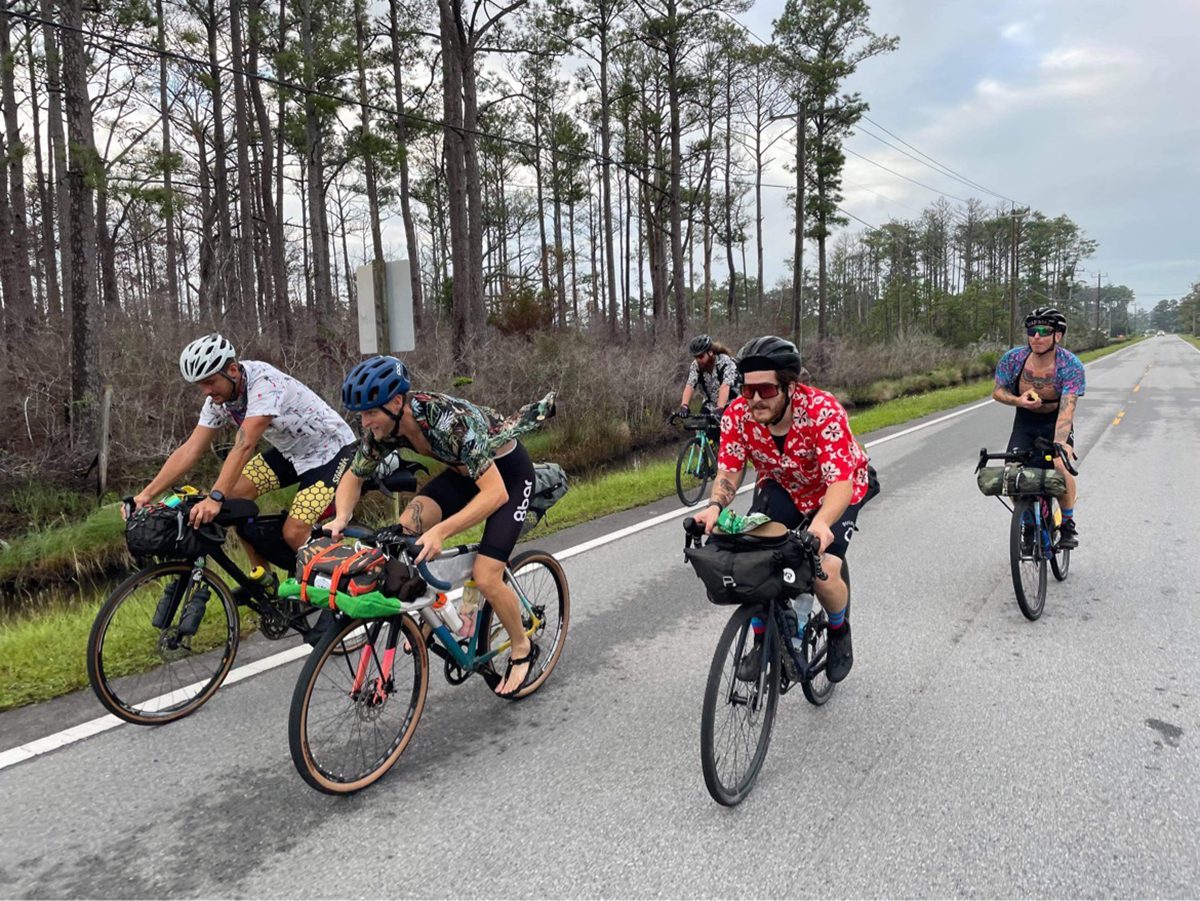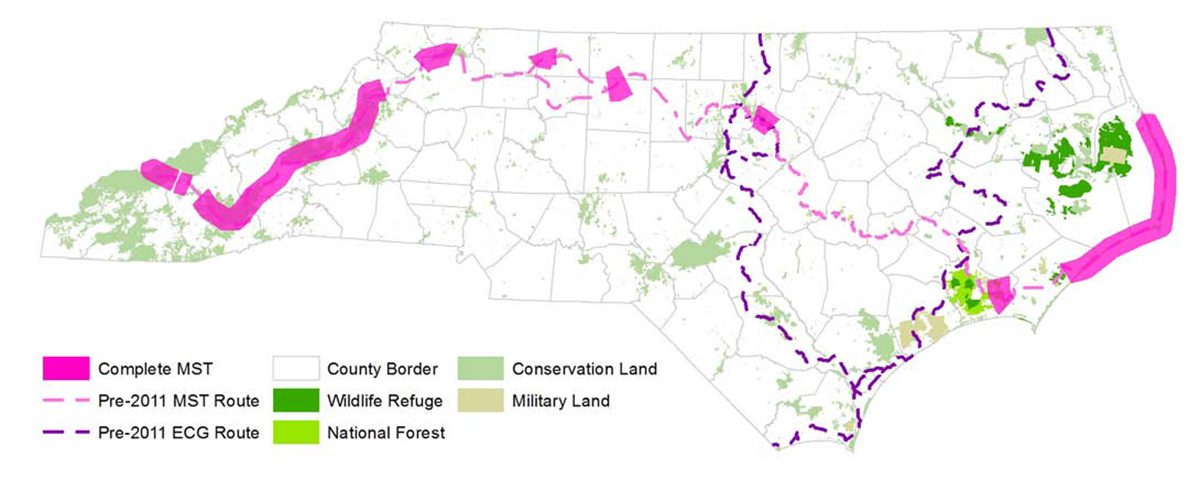
The more than 200 glossy-paged Croatan Regional Bicycle and Trails Plan sits among a stack of other bike and trail plans on a shelf in Becca Eversole’s office.
The plan is one Eversole, director of the Down East Rural Planning Organization, describes as ambitious, filled with page after page of suggestions for creating a continuous bike path through the Croatan National Forest that connects to local paths in Carteret, Craven, Jones, Onslow and Pamlico counties.
Supporter Spotlight
The plan calls for everything from multiuse trails to dedicated bicycle paths to creating bike-accessible roads by widening shoulders.
“It was very well done. It’s a very technically dense plan. It has a lot of good information on potential bike and pedestrian improvements,” Eversole said.
What’s good on paper has well, for the most part, stayed on paper. Nearly 10 years have passed since the plan was published in 2014.
“That is unfortunately the reality of the situation,” Eversole said.
The state Department of Transportation tends to fund bicycle and pedestrian projects that are associated with roadway projects, so funding for projects proposed in those like the Croatan regional plan are largely covered by local governments, where the vocal support tends to outweigh financial backing. There’s also the matter of political will.
Supporter Spotlight

“I would say in general when it comes to our local governments, they certainly support improving bike and pedestrian access in theory, but sometimes the money’s not there. Sometimes other priorities take precedent over improving bike and pedestrian facilities,” Eversole said.
Much of the Croatan Regional Bicycle and Trails Plan’s proposals fall within the boundaries of Carteret County, where there is a strong advocacy group for improving the bicycle network.
Alex McCrary, is a board member of Coastal Bike Impact, a group that aims to expand the number of safe bicycle routes for transportation, recreation and sport in Carteret and surrounding counties.
McCrary said in an email responding to questions that the group does not believe the status of the Croatan Regional Bicycle and Trails Plan “necessarily reflects a lack of priority, political will, or funding issues.”
There are other elements of bicycle and pedestrian plans that are being implemented in the county, he said.
“Realizing a regional bicycle and pedestrian plan is a complex process where certain parts of a plan may be feasible and implemented, but other parts may face constraints such as inadequate rights of way, the need to relocated utilities, or competing needs with other stakeholders,” he said. “The important thing is that the creation of plan is a critical step in the process of actually building out a true multi-modal transportation system.”

The regional plan was created as a result of the East Coast Greenway, a biking and pedestrian route that stretches 3,000 miles from Maine to Florida, connecting 15 states and 450 cities.
“The good thing about the plan is that a lot of what was proposed in it overlaps the East Coast Greenway,” Eversole said.
Because of that, implementing portions of the regional plan may be more cost-effective, she said.
For example, the East Coast Greenway is routed along Arendell Street, Morehead City’s main drag and part of U.S. 70. Planners are looking at creating a route closer to Bogue Sound, a move that would get cyclists away from the busy thoroughfare and onto a more scenic trail.
“This is an improvement that we can make that could be more cost-effective,” Eversole said.
The Carteret County Board of Commissioners earlier this year chartered a bicycle and pedestrian advisory committee to help plan.
“There is no doubt that the creation of a safe, viable bicycle and pedestrian transportation network would provide important recreational, health, and economic benefits to Carteret County,” McCrary said. “Bicycle and pedestrian facilities provide a high quality of life for residents, an opportunity for improving overall population health outcomes, and a big draw for the tourism industry that the county depends on. As projected growth begins to impact the area, bicycle and pedestrian facilities will play an important role in mitigating the congestion associated with that growth.”
The Down East Rural Planning Organization is one of 18 rural planning organizations in North Carolina. These organizations were created to help more effectively spread transportation dollars to rural areas and engage residents of rural areas in the transportation planning process.
The Eastern Carolina Council is the lead planning agency for the Down East organization, which was created in 2002.
The Croatan regional plan includes proposals for trail corridors through the Croatan National Forest and include a preferred route and alignment with the state’s Mountains-to-Sea Trail, which stretches more than 1,100 miles from the Great Smoky Mountains to the Outer Banks.
Proposed projects include expansion and improvements along N.C. 24, U.S. 17 and U.S. 70 as well as N.C. 58 in Carteret and Jones counties, N.C. 101 in Craven and Carteret counties, N.C. 12 in Carteret County and N.C. 306 in Pamlico and Craven counties.
Eversole is currently working on proposals with local partners to further study routes in Carteret, Craven and Pamlico counties. She’s been going to local municipalities to talk about what locals would like in terms of cycling and walking trails.
“At least half of the conversation we have in these meetings is bike and pedestrian projects,” she said. “Those are the projects I want to hear about and those are the projects often I don’t. I feel like it’s been very beneficial for me and our organization.”
She said public meetings will be hosted in Carteret County throughout 2023 for the development of the county’s new comprehensive transportation plan. Residents interested in participating in those meetings may check out eccog.org for more information and online surveys, which will be posted sometime in the spring.








